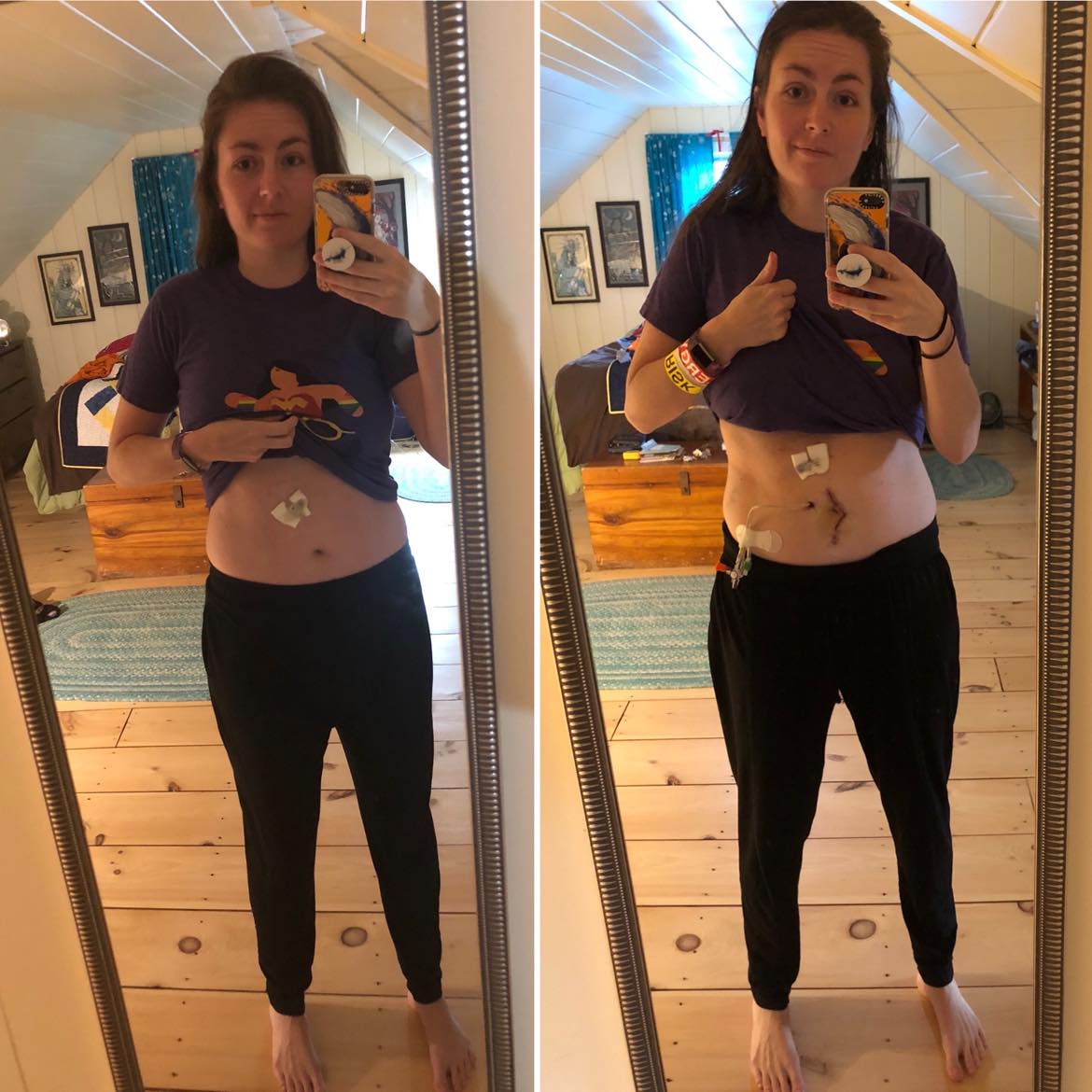Feeding tubes can be a lifesaver – literally. They enable our bodies to absorb the nutrients we need to heal. While tubes are wonderful inventions, they can also come with a risk of complications. So if you are going down the enteral nutrition road, here are a few feeding tube complications to look out for and tips for avoiding them:
1. Stool changes
When you first begin tube feeds, you may experience constipation or diarrhea. This is simply your body’s response to a new type of food. As your bowels adjust, this will likely clear up on its own. It can, however, be exacerbated by the type or pace of feeds or by new medications. Be sure to mention any significant stool changes to your care team so they can follow up if it persists longer or becomes more extreme than average.
2. Skin irritation
Wherever your tube touches your skin, irritation can occur. This can be from reactions to adhesives or other products used on the skin, leakage, or simply from frequent rubbing and friction of the tube. Your skin may look red or rashy and feel itchy, painful, or raw. To reduce irritation, it helps to first determine the cause. If movement/friction is the issue, secure the tube, so it doesn’t rub the skin. If leakage is an issue, try split sponges or tubie pads. And if your adhesives and other products are causing a reaction, try a new brand. You may be amazed at how different the ingredients in each product can feel. Always make sure to keep the area clean and dry, and do not apply creams or other products to the area without checking with your care team first.
Obstruction
Sometimes tubes can get obstructed or blocked. This is problematic, as it means you can’t get nutrition, hydration, or medications. Obstruction can be avoided by flushing with 30-60 mL of water after administering any feeds or medications and flushing 10 mL in between each medication. For continuous feeds, it is recommended to flush every four to six hours. Administering medications in pill form can also cause obstruction, so if at all possible, use liquid or powder medications only. If unavailable, crush your pills thoroughly to avoid chunks getting stuck. If you get a clogged tube, your doctor may try to flush out the clog (if minor), repair the tube if possible, or replace it entirely if necessary.
Dislodgement
Over time, tubes can become dislodged or displaced, meaning they shift out of their original position. This can happen from daily use but can be more significant from excessive activity or if the tube gets caught on something. To reduce the risk of dislodgement, minimize heavy lifting or exercise that may strain the area. You can also use products such as tubie clips and belts to keep everything in place. Your care team should also verify your tube’s integrity during each visit. This means making sure the tube is correctly placed and secure. Be sure to speak up if you feel any new pain near the insertion site or in your stomach/intestine. It is essential to take care of these issues right away before they cause other complications.
Note: if you have a G-J tube and experience frequent vomiting, it can become dislodged internally. Always report to a doctor experienced in G-J tubes if you have new pain after vomiting, especially in your throat or chest. It can be evaluated via X-ray.

Hypergranulation
Tubes that enter the stomach (PEG) or intestines (PEJ) directly through a hole in the abdomen (stoma) can develop hypergranulation. Granulation is a type of healthy tissue that develops around any fresh wound. Hypergranulation is unhelpful tissue that can develop around a wound that is unable to close due to a foreign body, such as a tube. It can look bumpy, swollen, red, shiny, or wet and may bleed easily. Although not a significant health risk, it can be painful. Hypergranulation is a feeding tube complication that can be caused if the tube moves around too much, if there is too much pressure on the stoma, if the stoma is wet, or if there is an infection. To avoid it, make sure your tube is the right size, that it is secured to avoid movement, and keeps the area clean and dry.
More information can be found here.
Infection
Any medical device that enters through a hole in your skin can be an access point for infection. It is, therefore, crucial to keep the area clean and dry. An infected stoma can be red, swollen, painful, or have an abnormal discharge or abscess. Tell your care team if you think you may have an infection so that it can be treated right away with antibiotics. To prevent infection, always wash your hands well before touching your tube or stoma. Wash the area with soap and water daily, and then keep it dry and open to the air. Address any skin irritation or leakage and keep the site secure so the tube doesn’t move around.

